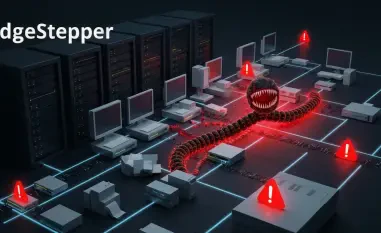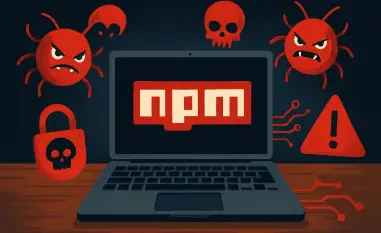In a significant technological security breach, cyber-espionage campaigns have become more sophisticated, employing increasingly advanced tactics to infiltrate sensitive regions. Notably, a particular campaign attributed to China-nexus actors, dubbed “LapDogs,” has generated substantial concern across multiple sectors in the US and Asia. Using a network of operational relay boxes, these threat actors have amplified their obfuscation techniques, complicating attribution and investigative processes. The campaign predominantly targets real estate, IT, networking, and media sectors in strategic locations like the United States, Japan, South Korea, Hong Kong, and Taiwan. The strategic nature of this operation hints at a well-coordinated, geo-targeted espionage effort rather than a random attack, making it a priority for cybersecurity experts worldwide.
Sophisticated Tactics and Techniques
Operational Relay Boxes and Obfuscation
Operational relay boxes (ORBs) play a pivotal role in the LapDogs campaign, underpinning the network of compromised devices used by threat actors to evade detection and scrutiny. These ORBs include small office/home office devices such as routers and IoT endpoints, along with virtual private servers. By harnessing over 1,000 such devices, the attackers ensure enhanced obfuscation and plausible deniability, frustrating efforts to trace back their origin. The threat actors behind this campaign employ a custom backdoor named “ShortLeash,” which enacts persistence on infected devices by linking them to the ORB network. Moreover, these attackers have devised deceptive TLS certificates, falsely attributed to the Los Angeles Police Department, to further mislead investigative efforts. This malicious ingenuity illustrates a concerted effort to outmaneuver cybersecurity defenses and regulatory probes, highlighting the increasing precision and planning in executing such attacks.
Advanced Persistent Threats: Tactical Evolution
SecurityScorecard’s report unveils how Advanced Persistent Threats (APTs), like those associated with Chinese hacking groups, display meticulous operational planning in deploying intrusions identified within the LapDogs campaign. This network mirrors tactics utilized by other notorious Chinese threat actors, such as the Volt Typhoon. By obscuring command-and-control (C2) communications through methods like ORBs, they effectively decrease detectability while increasing the challenge of attribution. Furthermore, comparisons with an associated ORB network known as “PolarEdge” reveal divergences in tactics, techniques, and certificate management, underscoring a specialized approach to each operation. The strategic evolution observed in these actors indicates a switch from opportunistic attacks to well-planned campaigns targeting specific geographical regions, demonstrating a refined and deliberate threat posed by these cyber adversaries.
Implications for Targeted Sectors
Impact on US and Asian Infrastructure
The revelations of LapDogs’ extensive impact on critical sectors in the US and Asia highlight potential vulnerabilities and the necessity for enhanced security measures. The campaign’s specific targeting of real estate, IT, networking, and media suggests a disruption strategy aimed at sectors vital to maintaining economic stability and information flow. These targeted efforts could compromise sensitive data, leading to economic ramifications if left unchecked. The blend of low-visibility devices in these sectors with strategic targeting reflects a shift toward more deliberate, long-term cyber espionage plans. Entities operating in these vulnerable sectors must prioritize strengthening digital defenses, enhancing data protection protocols, and ensuring robust incident response strategies to mitigate risks.
Proactive Measures Against Cyber Espionage
Given the increasing sophistication and tactical prowess demonstrated by campaigns like LapDogs, proactive measures are becoming essential for safeguarding information and systems. Companies at risk must invest in the continuous advancement of cybersecurity defenses, stay informed about emerging threats, and regularly update and patch systems. Collaborative efforts between the private sector and governmental bodies are key to designing policies that anticipate vulnerabilities and address potential cyber threats efficiently. Recognizing the need for proactive security measures, organizations are encouraged to foster a culture of cybersecurity awareness and training among employees, fortifying their response to future challenges. Emphasizing strategy and preparedness will play a critical role in countering this dynamic threat environment, mitigating potential damages, and maintaining operational resilience.
Looking Ahead: A Continued Cybersecurity Challenge
As cybersecurity landscapes evolve, the insights gleaned from incidents like the LapDogs campaign underscore the urgent need for dynamic threat response strategies. The unique characteristics and reach of these operations point to a continued cybersecurity challenge where actors learn from preceding operations. Investing in comprehensive threat analysis, adopting cutting-edge defensive technologies, and fostering collaborative frameworks will be instrumental in anticipating potential attacks. Cybersecurity professionals must remain adaptable and informed, ensuring that defenses evolve in tandem with the threats they face. A proactive, multifaceted approach that addresses both technological and human factors will be essential in maintaining the integrity and security of critical data and systems amidst this heightened threat environment.












